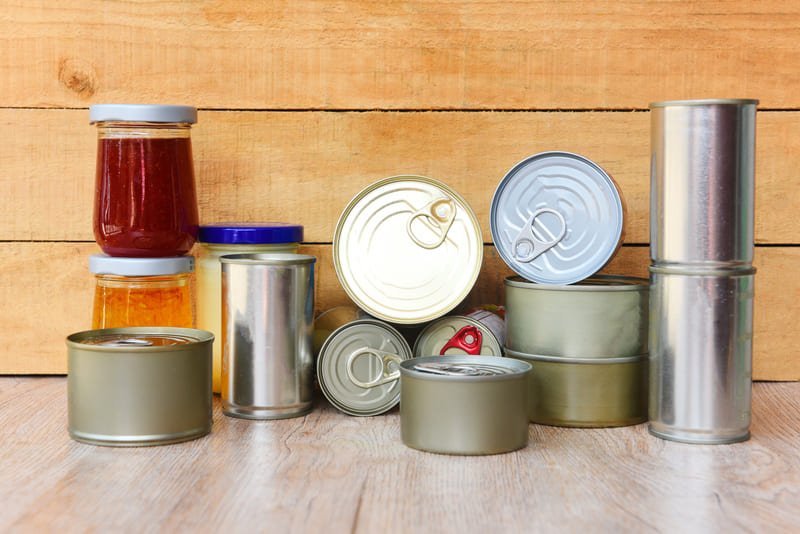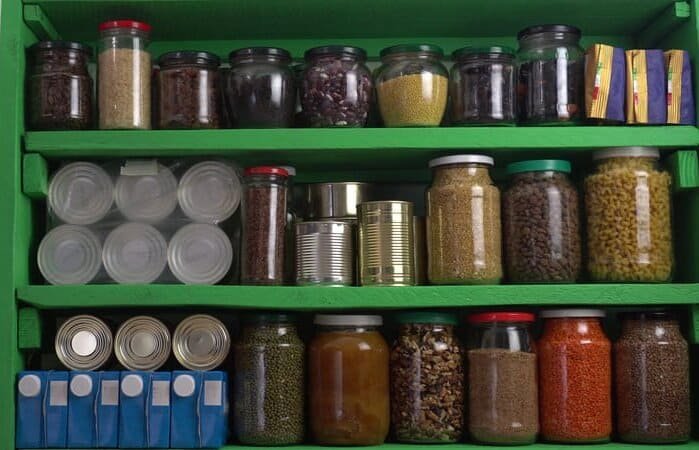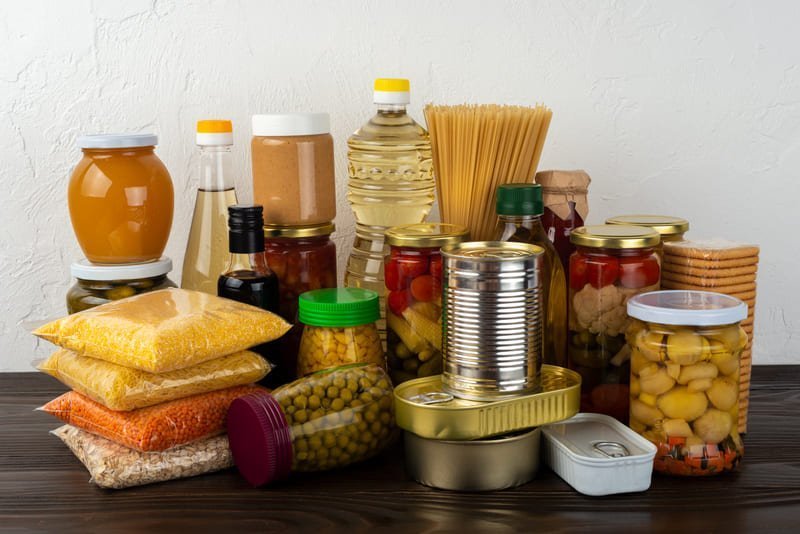In order to stay prepared for any emergency situation, it is important to have a supply of long lasting survival food. This article will provide you with the essential information you need to know about emergency food supplies and survival food storage. By understanding the basic criteria for selecting the right foods and learning about the best options available, you can ensure that you have the necessary resources to sustain yourself and your family during times of crisis.
Key Takeaways:
- Long lasting survival food is crucial for emergency preparedness.
- Consider factors such as shelf life, ease of storage and preparation, nutritional value, and dietary restrictions when choosing long-term survival foods.
- Include essential foods like canned goods, beans and legumes, whole grains, nuts and seeds, and dehydrated fruits and vegetables in your emergency food supply.
- Proper storage of emergency foods is essential to maintain freshness and safety.
- Take into account the availability of utilities and resources when preparing emergency foods.
Factors to Consider When Choosing Long-Term Survival Foods
When it comes to selecting long-term survival foods, there are a few key factors that can help you make the best choices for your needs. By considering these factors, you can ensure that you have the most reliable options for your food storage.
Shelf Life
One of the most important factors to consider is the shelf life of the food. You want to choose foods that have a long shelf life and can remain edible for an extended period of time. This will ensure that your food supply lasts as long as possible without spoiling.
One excellent option for long-term storage is freeze dried survival food. These foods undergo a special process that removes moisture while preserving their nutritional value. As a result, freeze dried foods can have an incredibly long shelf life, often up to 25 years or more.
Ease of Storage and Preparation
Another important factor to consider is the ease of storage and preparation. When you’re in an emergency situation, you want foods that are easy to store and require minimal effort to prepare. This will save you time and energy when you need it most.
Freeze dried survival food is not only long lasting, but it’s also incredibly easy to store and prepare. These foods come in lightweight, compact packaging that can be easily stored in your emergency food supply. When you need to eat them, you simply add water, wait a few minutes, and they’re ready to be enjoyed.
Nutritional Value
The nutritional value of your long-term survival foods should also be a top consideration. During times of crisis, it’s important to maintain a balanced diet to keep your energy levels up and ensure your overall well-being.
Freeze dried survival food offers the advantage of retaining its nutritional value even after the moisture is removed. This means you can still get the essential vitamins, minerals, and nutrients your body needs, even if you’re in a survival situation.
Dietary Restrictions
If you or your family members have specific dietary restrictions or allergies, it’s crucial to choose survival foods that accommodate those needs. Take the time to carefully read the labels and ingredient lists to ensure that the foods you select are safe to consume.
Now that you have a better understanding of the factors to consider when choosing long-term survival foods, you can make informed decisions that will meet your needs and keep you prepared for any situation.
| Food Type | Shelf Life | Preparation | Nutritional Value | Dietary Restrictions |
|---|---|---|---|---|
| Freeze Dried | Up to 25 years | Add water and wait | Retains nutritional value | Varies by brand |
| Canned Goods | 2-5 years | Open and heat | May degrade over time | Varies by product |
| Dehydrated | 5-10 years | Add water and cook | Some nutrient loss | Varies by brand |
| MREs | 5-10 years | Ready to eat | Contains a variety of nutrients | Varies by brand |
Essential Foods for Your Emergency Food Supply

Building an emergency food supply is crucial to ensure that you have enough food to sustain yourself and your family during a disaster. When it comes to stocking up on emergency food, it’s important to choose items that have a long shelf life, are easy to store, and provide essential nutrients. Here are some key foods that you should include in your emergency food supply:
Canned Goods
Canned goods are a staple in any emergency food supply. They are convenient, have a long shelf life, and provide a good source of nutrition. Some essential canned goods to consider include:
| Food Item | Benefits |
|---|---|
| Canned beans (e.g., black beans, kidney beans) | High in protein and fiber, versatile for various recipes |
| Canned vegetables (e.g., corn, peas, green beans) | Provide essential vitamins and minerals |
| Canned fruits (e.g., peaches, pears, pineapple) | Nutritious and can be eaten as a snack or in meals |
| Canned meats (e.g., tuna, chicken, beef) | Good source of protein and can be used in various dishes |
| Canned soups and stews | Ready-to-eat meals that provide nourishment and comfort |
Beans and Legumes
Beans and legumes are excellent options for emergency food supplies. They are rich in protein, fiber, and essential nutrients. Here are some popular varieties:
- Black beans
- Kidney beans
- Chickpeas
- Lentils
Whole Grains
Whole grains are an important source of carbohydrates and provide sustained energy. They also offer essential nutrients. Consider adding the following whole grains to your emergency food supply:
- Quinoa
- Brown rice
- Oats
- Whole wheat pasta
Nuts and Seeds
Nuts and seeds are excellent sources of healthy fats, protein, and essential minerals. They are also compact and have a long shelf life. Some options to consider include:
- Almonds
- Walnuts
- Chia seeds
- Flax seeds
Dehydrated Fruits and Vegetables
Dehydrated fruits and vegetables are lightweight, compact, and have a long shelf life. They retain their nutritional value and can be rehydrated or eaten as a crunchy snack. Some popular options include:
- Apple slices
- Strawberries
- Carrot chips
- Broccoli florets
In addition to these essential foods, you may also consider investing in survival food kits and long shelf life emergency foods. These kits offer a variety of essential foods in one package, making it convenient and efficient to build up your emergency food supply. They often contain a mix of canned goods, dehydrated foods, and other long-lasting options.
Remember: When stocking your emergency food supply, make sure to regularly check expiration dates and rotate your stockpile to maintain freshness.
Guidelines for Storing Emergency Foods

Proper storage of emergency foods is crucial to ensure their longevity and prevent spoilage. To maintain the quality and safety of your non-perishable survival food, it is essential to follow these guidelines:
- Store in a cool, dry place: Find a location away from heat, light, and moisture, as these factors can accelerate food deterioration. A dark pantry or a basement shelf can be ideal storage spots for your emergency food supplies.
- Avoid exposure to pests: Keep your survival food for emergencies in airtight containers or mylar bags to prevent pests such as insects or rodents from contaminating your supply. Ensure that any cracks or openings are sealed properly.
- Protect from oxygen: Oxygen can cause food to spoil over time by promoting oxidation. For dry goods that need to be repackaged, consider using mylar bags with oxygen absorbers. This will help minimize the presence of oxygen, extending the shelf life of your emergency foods.
- Regularly check expiration dates: Stay vigilant and regularly review the expiration dates of your emergency food items. Consuming the oldest items first will help maintain freshness and avoid wastage.
- Rotate your stockpile: Implement the “first in, first out” principle when consuming your emergency food supply. By rotating your stockpile, you ensure that the food doesn’t sit for too long and maintain a fresh inventory.
By adhering to these guidelines, you can ensure that your non-perishable survival food remains fresh and safe to consume, providing you with the sustenance you need during emergencies.
| Storage Guidelines | Key Points |
|---|---|
| Cool, dry place | Store away from heat, light, and moisture |
| Pest protection | Use airtight containers or mylar bags to prevent infestations |
| Oxygen control | Repackage dry goods with mylar bags and oxygen absorbers |
| Expiration date checks | Regularly review and consume older items first |
| Stockpile rotation | Implement “first in, first out” when consuming |
Additional Considerations for Emergency Food Preparation

When preparing emergency foods, it is important to consider the availability of utilities and resources. In a crisis situation, you may not have access to electricity or other cooking tools, so it is essential to choose foods that are easy to prepare and can be eaten as-is or with minimal cooking or reheating.
By selecting survival food for emergencies that requires little to no cooking, you can conserve valuable resources and ensure that you have sustenance during challenging times. Ready-to-eat meals, canned goods, and individually packaged snacks are excellent options for emergency food supplies.
“During an emergency, it is crucial to have food that is quick and easy to consume. Look for foods that require minimal preparation and can be eaten on the go.”
Additionally, it is important to consider any dietary restrictions or preferences that you or your family members may have. Allergies, intolerances, or specific dietary choices should be taken into account when selecting emergency food supplies. Opt for options that cater to those needs, such as gluten-free, vegetarian, or kosher meals.
Remember, the goal of emergency food preparations is to provide sustenance during challenging times. By taking these additional considerations into account, you can ensure that your emergency food supplies meet the unique needs of your situation.
Key Considerations for Emergency Food Preparation:
- Opt for foods that require little or no cooking
- Select a variety of ready-to-eat meals, canned goods, and packaged snacks
- Consider dietary restrictions and preferences
- Choose options that are gluten-free, vegetarian, kosher, etc.
| Food Type | Main Advantages |
|---|---|
| Ready-to-eat meals | – No cooking required – Long shelf life – Variety of meal options |
| Canned goods | – Extended shelf life – Ease of storage – Nutrient-dense |
| Individually packaged snacks | – Convenient – Portion-controlled – Suitable for on-the-go |
Conclusion
In conclusion, building a long-lasting survival food supply is crucial for preparedness in emergency situations. By considering factors such as shelf life, ease of storage and preparation, nutritional value, and dietary restrictions, you can choose the best long-term survival foods for your specific needs.
It is essential to include a variety of foods in your emergency food supply, such as canned goods, beans and legumes, whole grains, nuts and seeds, and dehydrated fruits and vegetables. These foods have a long shelf life and provide the necessary nutrients for your survival. Additionally, survival food kits are convenient options that contain a variety of essential foods in one package.
Proper storage and regular rotation of your emergency food supply are vital to ensure its longevity. Store non-perishable survival food in a cool, dry place, away from heat, light, moisture, pests, and oxygen. Use airtight containers or mylar bags with oxygen absorbers for dry goods that need to be repackaged. Regularly check expiration dates and consume the oldest items first to maintain freshness.
By following these guidelines and considering additional factors such as ease of preparation and dietary needs, you can be well-prepared with the necessary resources to sustain yourself and your family during times of disaster. Having a long shelf life emergency food supply is not just a precaution, but a wise investment in your safety and well-being.
FAQ
What factors should I consider when choosing long-term survival foods?
When choosing long-term survival foods, it is important to consider factors such as shelf life, ease of storage and preparation, nutritional value, and dietary restrictions.
What are some essential foods for my emergency food supply?
Some essential foods to include in your emergency food supply are canned goods, beans and legumes, whole grains, nuts and seeds, and dehydrated fruits and vegetables.
How should I store my emergency foods?
It is important to store non-perishable survival foods in a cool, dry place away from heat, light, moisture, pests, and oxygen. Using airtight containers or mylar bags with oxygen absorbers is recommended for dry goods that need to be repackaged.
What additional considerations should I make for emergency food preparation?
When preparing emergency foods, it is important to choose foods that are easy to prepare and can be eaten as-is or with minimal cooking or reheating. It is also important to take into account any dietary restrictions or preferences that you or your family members may have.












